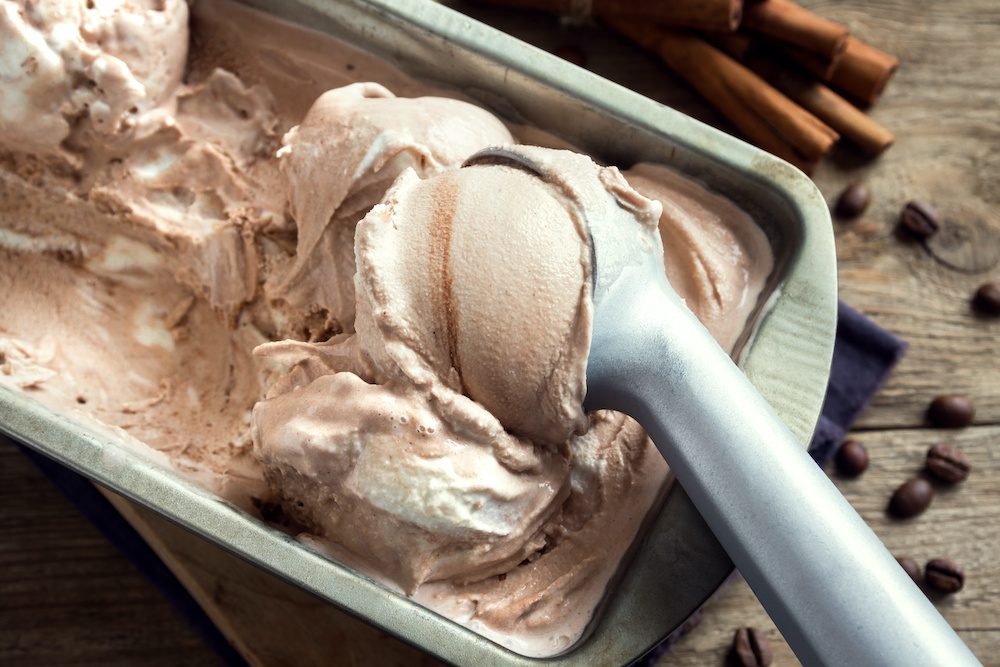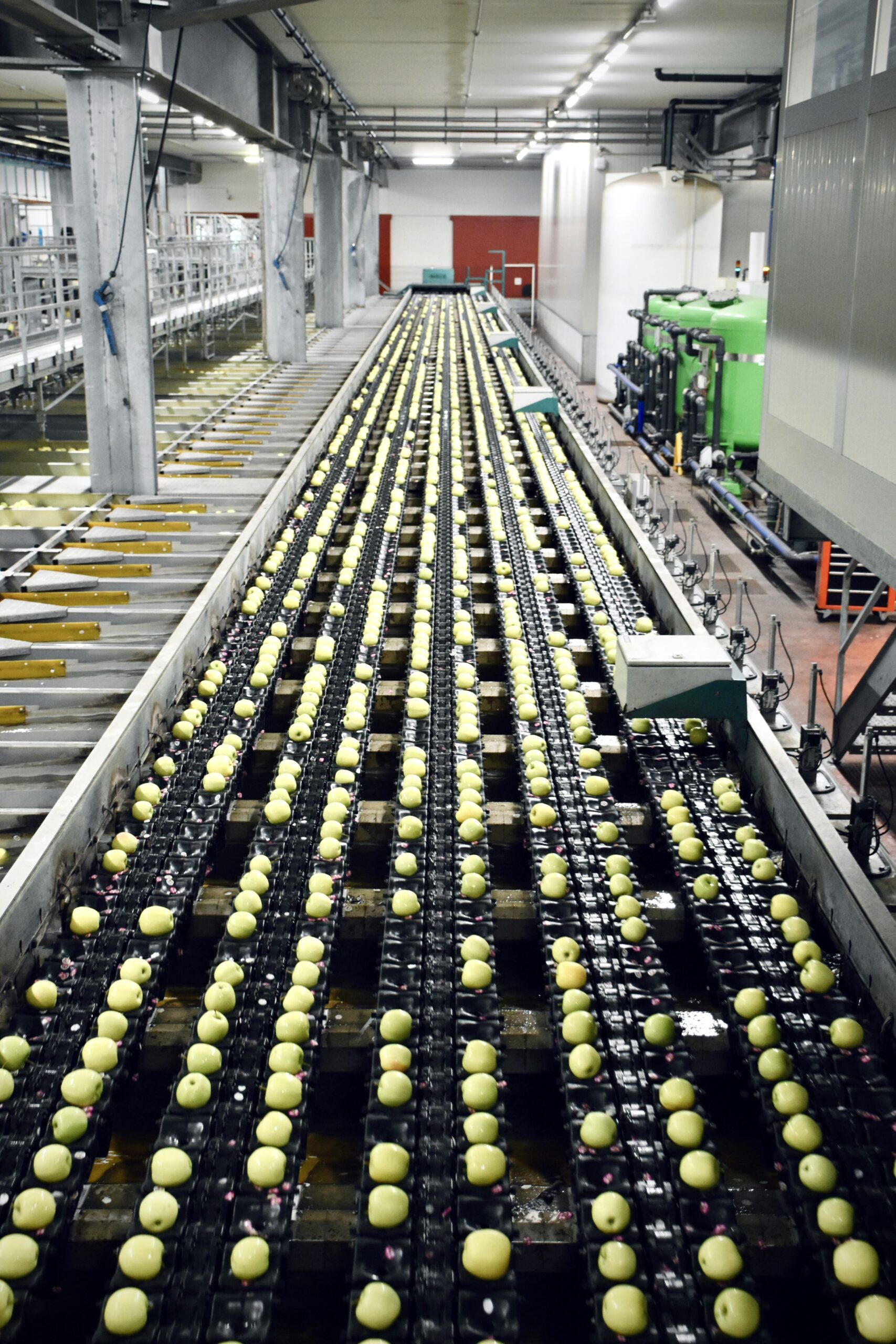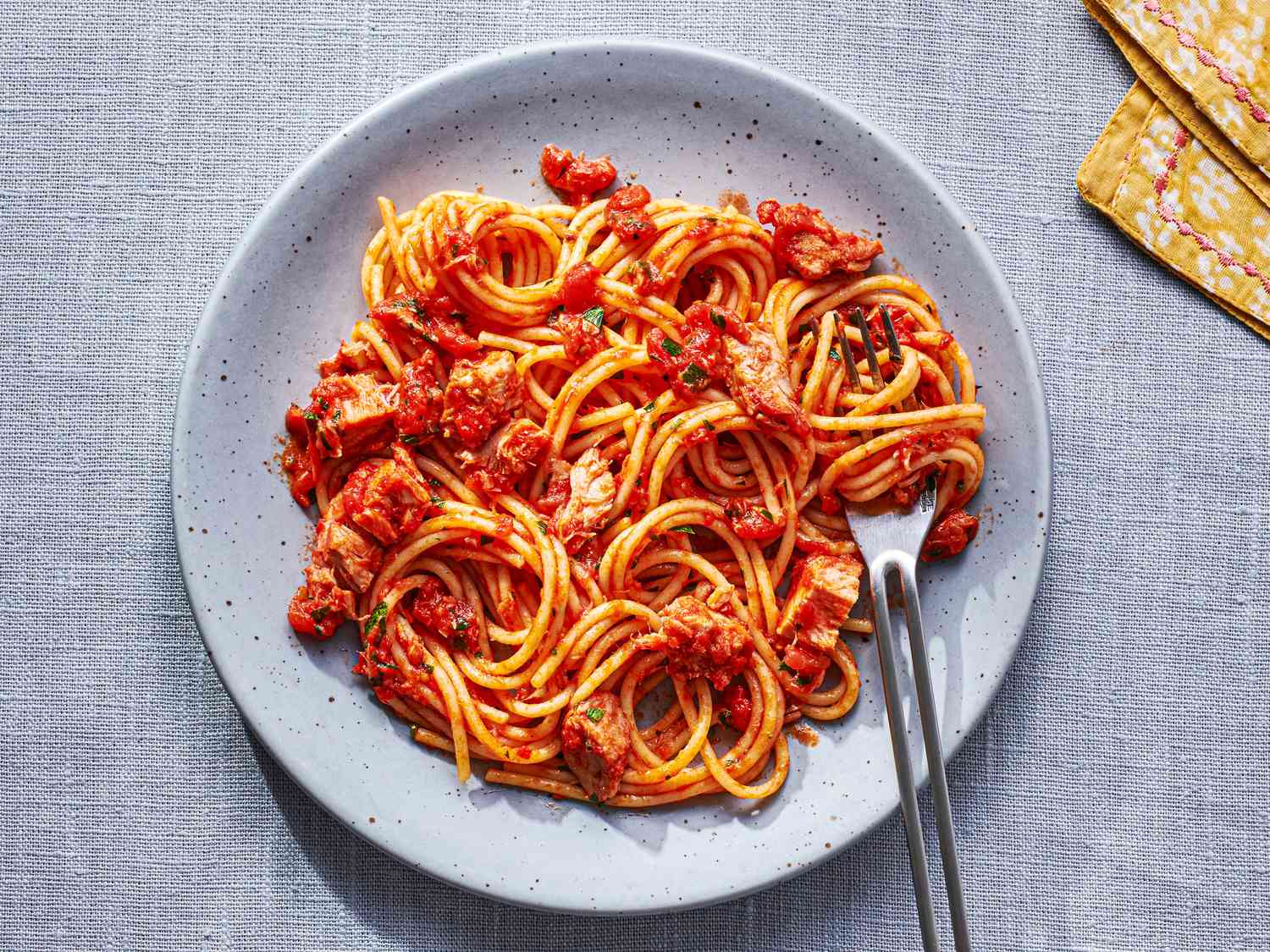The freezing time for ice cream can vary based on factors such as the recipe, freezing method, and machine used. Generally, it takes about 20-30 minutes in a traditional ice cream maker, 4-6 hours in a standard freezer, and minutes in a liquid nitrogen setup. Adjustments may be needed based on specific conditions and preferences.
Join us on a chilly voyage through the science and artistry behind this beloved dessert, where the magic unfolds within the confines of the freezer.
Factors Affecting Ice Cream Freezing Time
Initial Temperature of the Mixture: The starting temperature of it mixture matters. If it’s already cold, it will freeze faster. You can speed things up by chilling the mixture in the fridge before freezing.
Type of Ice Cream Maker: The maker can affect freezing time. Some machines are faster than others. Machines with built-in freezers are usually quicker than those that use ice and salt. Gelato makers might also have different freezing times because of their unique churning method.
Desired Consistency: The texture you want your ice cream to have matters. Softer ones or gelatos will freeze faster, while harder ones take more time. Some recipes aim for a soft-serve style, while others go for a firmer, scoopable texture.
Recipe Ingredients and Composition: The ingredients in your mixture play a big role. More fat, like cream or egg yolks, can slow down freezing, while extra sugar can help prevent ice crystals and speed up freezing.
Size and Quantity: Smaller ice cream batches freeze quicker than larger ones because there’s less to freeze.
Container Size: Smaller portions of ice cream melt or freeze faster than larger ones because they have more surface area.
Room Temperature: A warmer room causes it to melt more quickly and may make it take longer to freeze.
Freezer Temperature: The freezer’s temperature is essential for freezing ice cream. A colder one helps it more rapidly.
Humidity Levels: High humidity slows melting, while low humidity speeds it up. The humidity in your location affects how quickly it melts.
Air Circulation: Good air circulation in the freezer helps ice cream freeze evenly and quickly. Overcrowding or poor organization can slow down the process.
Frequent Opening of the Freezer: Opening the freezer door a lot lets in warm air and slows freezing. Reducing how often you open the freezer helps ice cream freeze faster.
Churning or Agitation: Some makers need to be churned or agitated during freezing, and the method used can affect freezing times depending on the machine.
A Foolproof Guide to Perfect Ice Cream Preservation
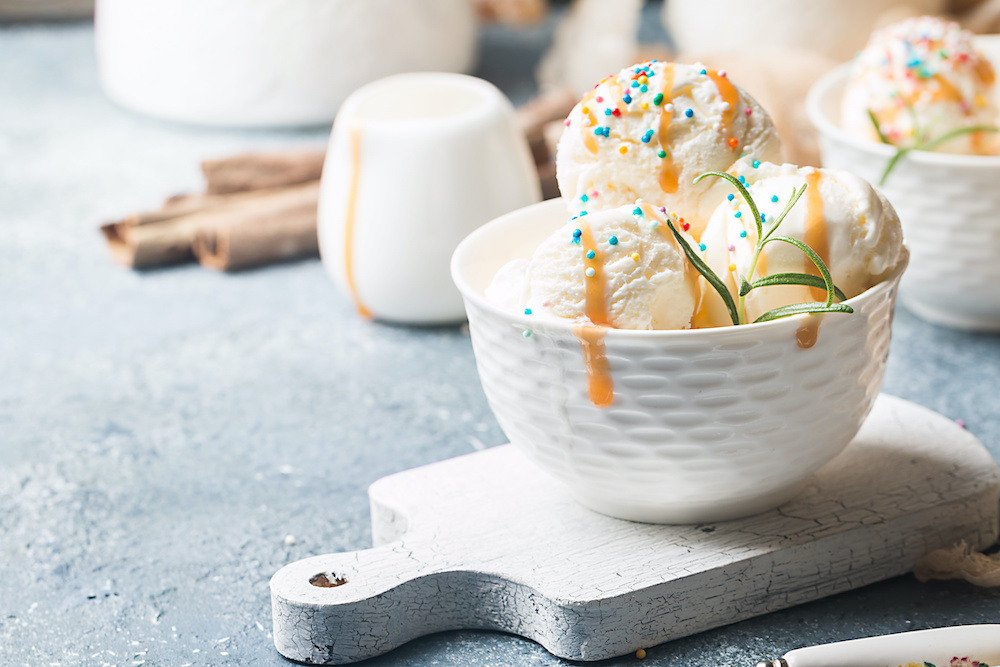
To freeze your ice cream just right, pop it into a freezer set between -5 to -10°F. This keeps it cool and stops it from melting too soon. Stick it in the center or back of the freezer—avoid the warm spot near the door.
For about 3-4 months, it will stay awesome if you seal it tight in a container. Don’t let it get freezer burn—that ruins the taste!
Remember to close the freezer door quickly. If you leave it open, not only will it suffer, but other frozen stuff will too.
Now, if you want your homemade ice cream pronto, chill the ingredients overnight. And make sure it mix is cold before you use it—let it hang out in the fridge for at least an hour.
For a step-by-step guide, check out YouTube. Happy freezing!
Ice Cream Freezing Methods: A Quick Guide
| Freezing Method | How it Works | Timeframe |
| Traditional Ice Cream Maker | Built-in freezer or pre-frozen bowl, churns and freezes | 20-30 minutes for a batch |
| Gelato Maker | Similar to traditional but designed for gelato | 30-40 minutes |
| No-Churn Method | Doesn’t require a machine, mixture is frozen in a container | 4-6 hours or overnight |
| Liquid Nitrogen Method | Uses liquid nitrogen for rapid freezing | Within minutes |
| Commercial Freezing Systems | Specialized machines for large-scale production | Varies based on scale and machinery |
| Dry Ice Method | Dry ice is added for quick freezing | Can be faster than traditional methods |
| Ice Cream Roll Technique | Mixture is poured on a frozen surface and rolled into thin layers | Quick due to thin layers |
| Soft Serve Machines | Freezes and dispenses simultaneously, creating a soft texture | Almost instantaneous |
| Popsicle Molds | Mixture is poured into molds with sticks inserted | Usually a few hours |
| Freezer Bag Method | Mixture is sealed in a bag with ice and salt for shaking and freezing | Around 30 minutes to an hour |
Why Won’t My Ice Cream Freeze? Common Reasons and Easy Fixes
Ever wondered why your ice cream doesn’t freeze like it should? Well, there are a bunch of reasons. One biggie is not keeping it in the center or back of the freezer. And, of course, your freezer needs to be pretty chilly.
Now, if you’re whipping up homemade ice cream, there are even more things to watch out for:
- Not enough eggs in the custard.
- The ingredients and freezer bowl not getting cold enough.
- Using too much water in the bucket with an ice and salt ice cream maker.
- An old ice cream maker that’s not spinning like it used to.
- Too much party spirit—meaning, too much alcohol in the ice cream.
Fix these, and you’ll be on your way to frozen bliss!
Say Goodbye to Icy Homemade Ice Cream: Tips for a Creamy Delight
Ever notice homemade ice cream can sometimes be a bit grainy and icy? Well, there’s a reason for that and some easy ways to fix it!
First off, if it feels like a snow cone, it might be because the sugar didn’t fully dissolve or you churned it too much. When you make it, tiny ice crystals show up during the churning dance it’s what makes it creamy. But, if you dance too long, the crystals get big, and your ice cream turns icy. Freezing it for ages doesn’t help either.
Here’s the secret: use airtight containers. No more melting and refreezing drama when you just want a scoop.
And if you’re feeling fancy, a dash of alcohol in the mix keeps things soft and smooth. Alcohol doesn’t like freezing, so it stops your ice cream from turning into a rock.
Just don’t go overboard with the booze you want it, not a slushie. And watch out for freezer burn. Seal that sweet treat up and keep the freezer below 0°F. Creamy ice cream, here you come!
Can You Put Melted Ice Cream Back in the Freezer?
Yes, your ice cream turned into a puddle—what now? Well, if it just got a little soft and stayed cold, refreezing is okay. But if it turned into a soupy mess outside the freezer, better not risk it. Refreezing could make you sick.
Furthermore, a homemade one is especially tricky. No preservatives mean it’s freshest right after you make it. Enjoy it ASAP!
Store-bought melted ice cream can go back in the freezer, but here’s the catch: it might taste and feel a bit weird. Once it goes all the way to liquid, it’s not the same. Plus, there’s a chance it got friendly with some bacteria.
So, play it safe and scoop it up before it turns into a health hazard.
How To Tell If Ice Cream Has Gone Bad?
Want to make sure your ice cream is still the frozen delight it should be? Keep an eye out for these signs:
- Little ice crystals on top.
- Feels grainy and dense instead of smooth.
- Smells weird, not like it should.
- Turned into a puddle.
- Looks gooey and slimy.
See any of these? It’s probably time to say goodbye and toss it out. Better safe than sorry!
Make Ice Cream Without a Machine: It’s Easy
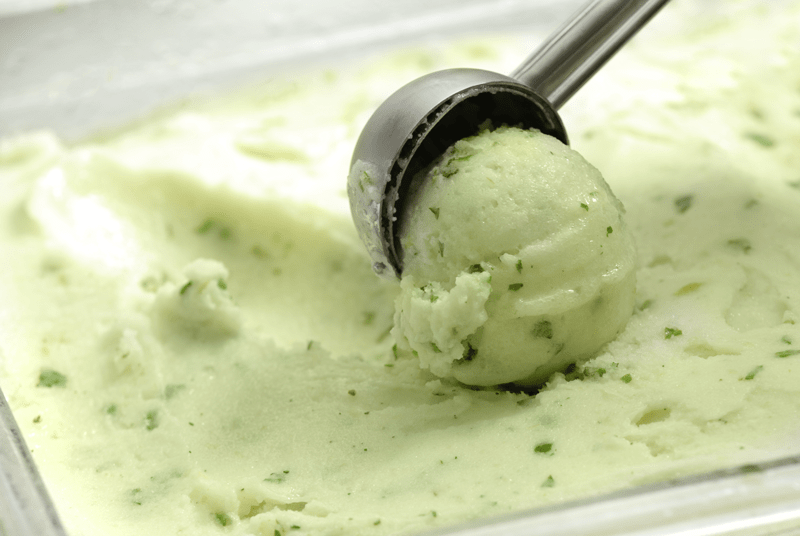
Got a craving for ice cream but no machine? No worries! Here’s a simple way:
- Mix together 1½ cups milk, 1½ cups heavy cream, ⅔ cup sugar, 1 tablespoon vanilla extract, and a pinch of salt.
- Pour it into a square baking pan and pop it in the freezer for 90 minutes.
- Take it out, give it a good whisk, and back to the freezer it goes.
- Repeat the whisking every 45 minutes, scraping the sides well.
- Do this a few times, and in about 3-4 hours, you’ll have soft-serve ice cream!
Keep stirring for a fluffier treat. No machine, no problem!
FAQ’s
How do you freeze ice cream quickly?
Using a small fan in the freezer hardens ice cream much faster.
Why does ice cream take so long to freeze?
Too much sugar, salt, or alcohol in the recipe can lower the freezing point, causing ice cream to take longer to freeze.
Can ice freeze in 3 hours?
It typically takes around 2 to 3 hours for ice cubes to freeze in a standard freezer, depending on factors like water amount and container size.
How long does ice take in the freezer?
Under standard conditions, a simple 12-cube plastic tray will take around four hours to freeze in a standard freezer.
Can ice cream freeze in 2 hours?
Place the ice cream can in the freezer for 3 to 4 hours until hardened or scrape it into a container with an airtight cover.
How do you freeze ice cream in 5 minutes?
There’s a method involving a Ziploc bag and quick shaking that claims to make creamy ice cream in 5 minutes.
Why ice cream is not freezing?
Your freezer may not be cold enough; ice cream requires a temperature of zero degrees Fahrenheit to freeze solid.
When ice cream won’t freeze?
Ensure you’re chilling the mixture properly before adding it to the ice cream maker; warm mixture won’t freeze well.
What makes ice cream not freeze?
Ice cream stays soft because as it cools, some water freezes, forming ice crystals, and the increased sugar concentration lowers the freezing point, preventing it from becoming rock hard.
Final Words
In a nutshell, a number of variables, such as the recipe’s composition, the type of ice cream machine, and the freezing method selected, affect how long ice cream takes to freeze. Conventional methods could take 20–30 minutes while freezing in a regular freezer takes about 4–6 hours.
Moreover, liquid nitrogen and other advanced procedures can reduce the process time to only minutes. It’s crucial to take these things into account and adjust the freezing duration according to the equipment available and the desired consistency.
Making homemade ice cream ultimately comes down to experimentation and figuring out the ideal ratio to create a delicious frozen dessert.







